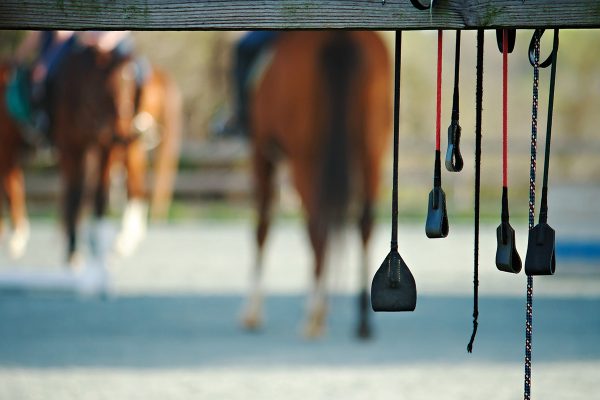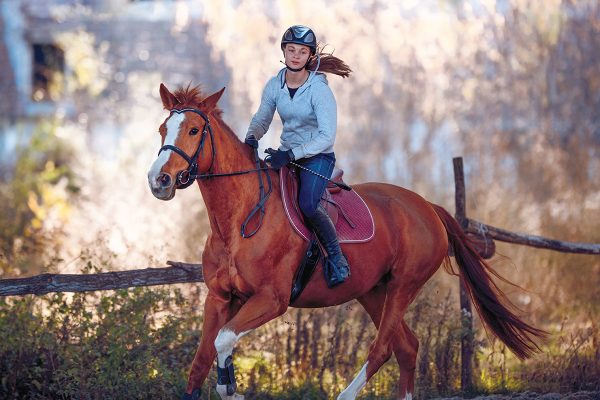
You probably feel pretty comfortable carrying a riding crop. It does seem to be an everyday part of English riding, but are you sure that you’re using one correctly?
How to Hold
It’s easiest to carry a crop in your dominant hand. For example, if you’re right-handed, you should carry it in your right hand. The exception would be if your horse needs some specific schooling with the crop on the opposite side of his body—then you can switch to carrying the crop in your left hand.
Grip the thicker end of the crop in your palm. When you close your fingers around the rein, you’ll have a secure grip of the crop. Be sure that you’re holding the crop just below the knot or button at the top end. If you hold the crop too far below this end, so that several inches stick above your hand, you run the risk of accidentally jabbing yourself in the chest or face if your horse suddenly stops or spooks.

Simply carrying a crop shouldn’t cause your horse to get tense. However, some ex-racers and horses that have been abused with a whip may get nervous when they realize you’re carrying one.
For these horses, choose a short crop (about 16 inches long) and try to keep the flapper end against your thigh while you ride. Eventually your horse will learn to trust you and accept the crop as just another item of tack.
Making Contact
A crop can help your horse understand what you want. It works as a reinforcement or backup to your leg. That’s why, in most instances, you apply the crop to your horse’s side, directly behind your lower leg.
To accomplish this, temporarily place both reins in one hand. Then reach down and back with the crop and tap your horse behind your calf or heel. It takes some practice to do this smoothly. Try it at a standstill several times (without actually hitting your horse!) until you feel at ease with the movement.
When used this way, the crop tells your horse to pay better attention to your leg. A correctly applied crop can help make your horse move over, go faster or jump with more effort off the ground.
Of course, it’s much simpler to just keep both hands on the reins, wriggle your wrist and smack your horse on his shoulder with the crop. Yet hitting your horse on his shoulder does nothing to help him respond to your leg. Instead, it can cause problems. Your horse could start tossing his head because he’s annoyed, or misunderstand your request and switch his lead at the canter. Also, some shows have rules against applying a crop anywhere in front of the girth. That’s another reason why it’s important to carry and use a crop correctly.
This article about how to carry a riding crop appeared in the May 2021 Mini Digital issue of Young Rider magazine. Click here to subscribe!


